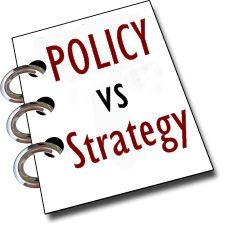Approaches to Total Quality Management
There are different approaches to Total Quality Management (TQM). These refund the business on a flow basis, with customers directing the content of the flow and competitors, the process capabilities.
These approaches to TQM include: Just in time, Statistical process control, Total preventive maintenance, statistical and Management Tools, Automation Development, Quality function development, Quality circles, Total Quality control, Robust design, High Technology Circles, New Technology Development, Policy deployment, Process architecting, process deployment automation, Customer-aided design, Kansei engineering, Cognitive quality of work life, Social democratic quality, Process improvement, Process execution automation, Customers managed corporation, Middle-up-down management, Meta cognitive organization, Democratic scientific management.
Approaches to TQM
The following are the major approaches to total quality management.
1. Just in TimeCutting inventory buffers: raw material, work-in-progress, finished goods, time, knowledge.
2. Quality Circles: Cutting authority buffers by empowering workforce to develop solutions.
3. Statistical Process Control: Cutting tolerance buffers through tighter monitoring of operations: Plan, do, check act.
4. Total Quality Control: Cutting department / function buffers by turning departments and functions into steps in a cross functional process.
5. Process architecting: Re-founding the workforce from scratch for heightened quality.
6. Process improvement: Analyzing the processes of a business architecture to improve them.
7. Process Deployment Automation: Automating the process engineering process across the organization.
8. Process Execution Automation: Automating the routine processes across the entire organization.
9. Total Preventive Maintenance: Scientific prevention through systematized care of equipment.
10. Robust Design: Scientific design by maximizing signal-to-noise ratio for long-term stable performance.
11. Statistical & Management Tools: Histograms, check sheets, cause and effect diagrams, affinity diagrams et al.
12. High Technology circles: Application of high technology tools like expert systems, multivariate statistics, contradiction analysis.
13. Customer-Aided Design: Transferring the product design function to customers instead of relying on gut-feel.
14. Customer-managed Corporation: Getting customers to manage the company’s systems and processes.
15. Kansei Engineering: Extending organizational systems till they can respond to emotional data from customers.
16. Middle-Up-Down Management: Putting company systems in the hands of generations other than those usually in control.
17. Automation Deployment: Automation already-laid-down quality processes to buy time for workforce to improve on those processes.
18. New Technology Deployment: Using new technology in the organization before the old one becomes obsolete.
19. Quality Function Deployment: Mapping customer wants directly to all activities in the organization.
20. Policy Deployment: Involving the entire workforce in the policy making function of a company.
21. Cognitive quality of work life: Defining the company’s ability to think, learn and invent in terms of customer requirements.
22. Meta cognitive organization: Measuring and improving the cognitive process at all levels of the organization.
23. Social Democratic Quality: Management style based on the way university research workgroups tend to operate.
24. Democratic Scientific Management: The meta quality corporation where every employee can improve cognitive processes.


